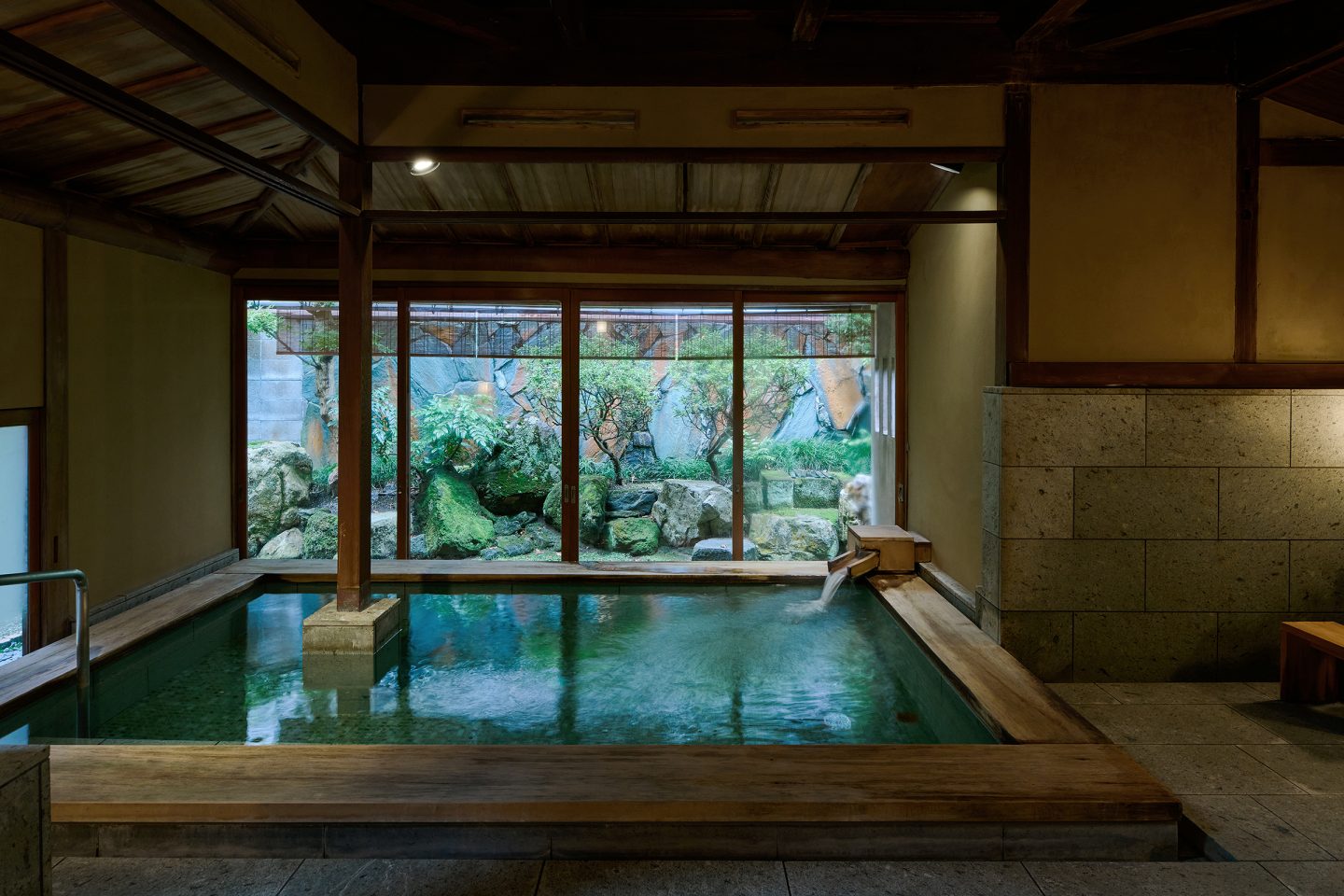
Mikiya
Kinosaki Onsen
Hyogo
Nationally Registered Tangible Cultural Property
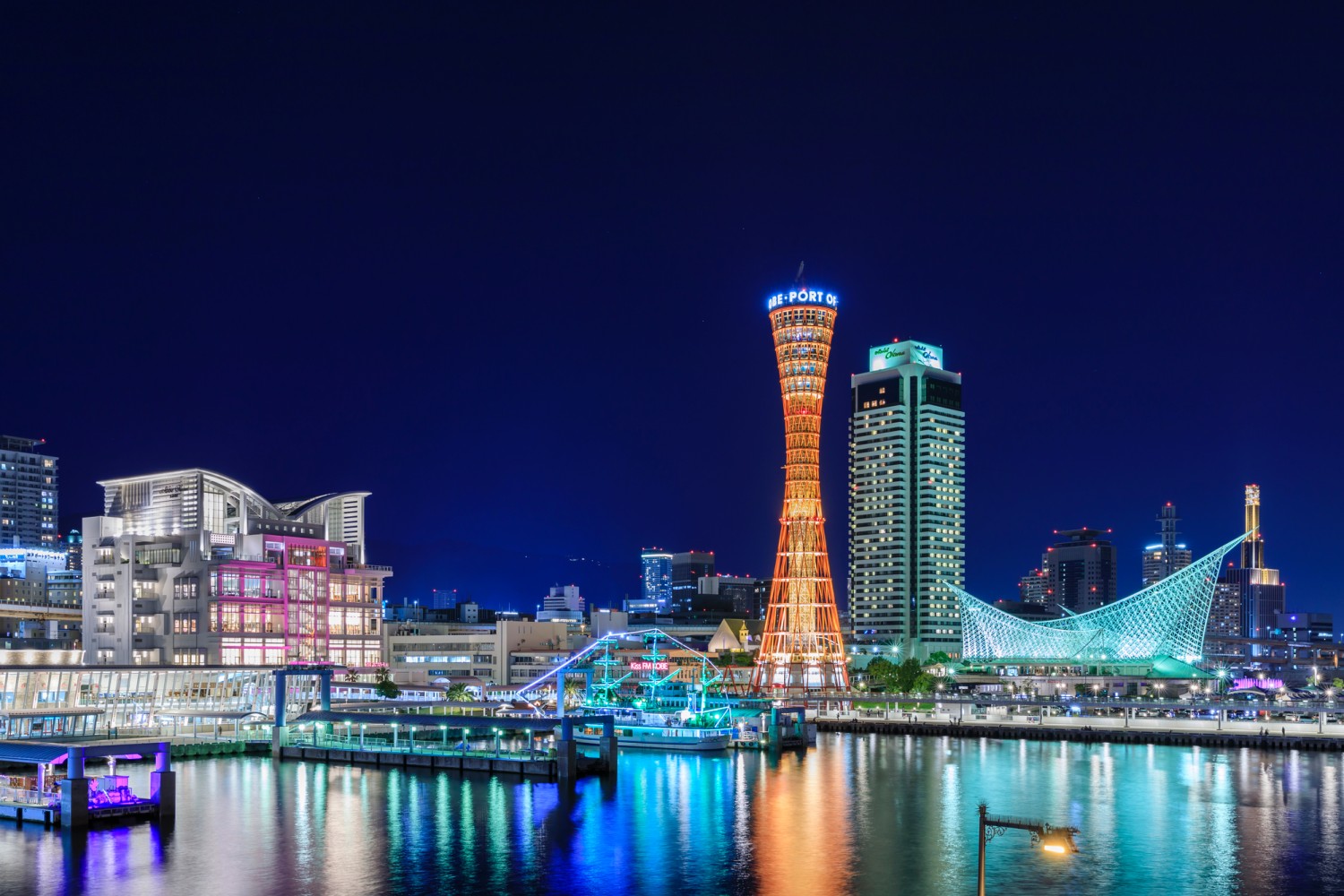
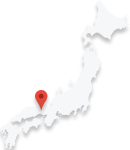
Hyogo Prefecture is located in the Kansai region of Honshu, almost in the center of the Japan archipelago. It faces the Sea of Japan to the north, the Seto Inland Sea to the south, and is one of the few prefectures on Honshu that faces two seas along with Aomori and Yamaguchi prefectures.
The prefecture is composed of a variety of distinctive areas, from large cities to rural villages and remote islands. If you divide them according to differences in history and climate, there are five: Settsu (Kobe and Hanshin), Harima, Tajima, Tamba, and Awaji. From diverse climates and environments, you can enjoy a wide range of leisure activities in each region, including swimming in the sea, skiing, and onsens.
The capital of Hyogo Prefecture is Kobe City, where the Port of Kobe is located. Hyogo Prefecture has developed as a highly international region centered on the Port of Kobe, which opened in 1868.
Kansai, where the prefecture is located, is the second largest economic and cultural center after Kanto, where Tokyo, the capital of Japan, is located. Kyoto in the Kansai region was the capital for about 1,100 years, from 794 until the capital was moved to Tokyo in 1869. The Port of Kobe has flourished as a trading hub with the Korean Peninsula and the continent since ancient times due to its proximity to Kyoto, where the capital was located, and Osaka, the center of commerce.
Arima Onsen, a historic and venerable onsen counted among the three ancient springs in Japan, is located in the Settsu area of Kobe City.
Spots where you can enjoy the port city include Kobe Harborland and Kitano Ijinkan Street. The Kobe Nunobiki Herb Garden and Kobe Animal Kingdom, where you can feel close to nature and animals, are also recommended spots in Kobe.
In the Harima area, there is Himeji Castle, a World Heritage Site that is well known and popular with foreign visitors to Japan.
Himeji Castle is an elegant castle with white walls, also known as the White Heron Castle, which retains the castle architecture of the heyday of the early 17th century.
In the Tajima area, facing the Sea of Japan in the northern part of the prefecture, there is Kinosaki Onsen, one of Kansai's leading onsen towns, and Yumura Onsen, one of Japan's most heated onsens. In these onsen towns, you can enjoy the beautiful historic streets and the atmosphere of Japan.
In the vicinity are the ruins of Takeda Castle, which is called the castle in the sky. The region has a climate with many cloudy and snowy days in winter, where you can enjoy skiing and snowboarding.
The Tamba area flourished as a key point of transportation to Kyoto, and retains the appearance of a castle town and a post town. It is also known as the area where the fossils of the Tamba dragon were found from the strata about 110 million years ago.
In the Awaji area of Awaji Island, in the eastern part of the Seto Inland Sea, there is Sumoto Onsen, the largest onsen resort on the island. Surrounded by the sea, Awaji Island has several beaches where you can enjoy swimming. In the Sumoto onsen town, there is Ohama Beach, which represents the island.
To get to Kobe from major cities overseas, go via Kansai International Airport.
Kansai International Airport is a 24-hour airport located in Osaka Prefecture, adjacent to Hyogo Prefecture, and is connected to major cities around the world. To get from Kansai International Airport to Kobe City, you can take a bay shuttle or limousine bus.
From major cities in Japan, Kobe is easily accessible by plane or bullet train.
There are three domestic airports in the prefecture: Osaka International Airport (Itami Airport), Kobe Airport, and Tajima Airport.
From Osaka International Airport (Itami Airport), which serves more than 25 cities in Japan, you can arrive in Kobe in about 30~40 minutes by limousine bus. It takes about 20 minutes by Port Liner from Kobe Airport, which serves more than 10 major cities in Japan, to Kobe City. Shinkansen Shin-Kobe Station is served by Shinkansen Nozomi trains every 15 minutes.
Tajima Airport is located in the northern part of the prefecture.
There are no bullet trains or highways in the area, and airplanes are an important mode of transportation.
Kounotori Tajima Airport is the closest airport to Kinosaki Onsen. There is a direct flight to the airport from Itami Airport. There is a bus from the airport to JR Kinosaki Onsen Station, which takes about 40 minutes.
< Shinkansen >
Tokyo Station (Tokaido / Sanyo Shinkansen) → Shin-Kobe Station (about 2 hours 50 minutes)
< Airplanes and Trains>
Tokyo Station → Shinagawa Station→ Haneda Airport Terminal 3 Station→ Haneda Airport→ Kobe Airport→ Kobe Airport Station→ Sannomiya Station→ Shin-Kobe Station (about 2 hours 20 minutes)
< Shinkansen >
Nagoya Station (Tokaido/Sanyo Shinkansen) → Shin-Kobe Station (about 1 hour)
< train and bus >
Nagoya Station (bus) →Kobe Sannomiya → Sannomiya Station→ Shin-Kobe Station (about 6 hours 40 minutes)
< Shinkansen >
Shin-Osaka Station (Tokaido/Sanyo Shinkansen) → Shin-Kobe Station (about 10 minutes)
< train and bus >
Osaka Station (Tokaido / Sanyo Main Line) → Sannomiya Station → Shinhime Bus Kobe Sannomiya BT → Shin-Kobe Station (about 40 minutes)
Onsen resorts in Japan are not tourist destinations, but have been used as onsen healing grounds for a long time since ancient times. Onsen healing is to stay in an onsen area for a long period of time to cure illness or improve physical condition.
Onsen healing was already practiced in Japan about 1300 years ago in the Nara period (710~794). At first, it was done by some powerful people such as the emperor, but gradually it spread to people of the hierarchy such as nobles, monks, and samurai.
It was from the Edo period (1603~1868) that the common people began to actively practice onsen treatment. During this period, the movement of the common people was restricted, but travel for religious and medical purposes was not restricted. As a result, people from other regions began to visit the onsen resort for medical purposes. In the Meiji era (1868~1912), onsen resorts shifted from onsens to recreational areas and tourist spots.
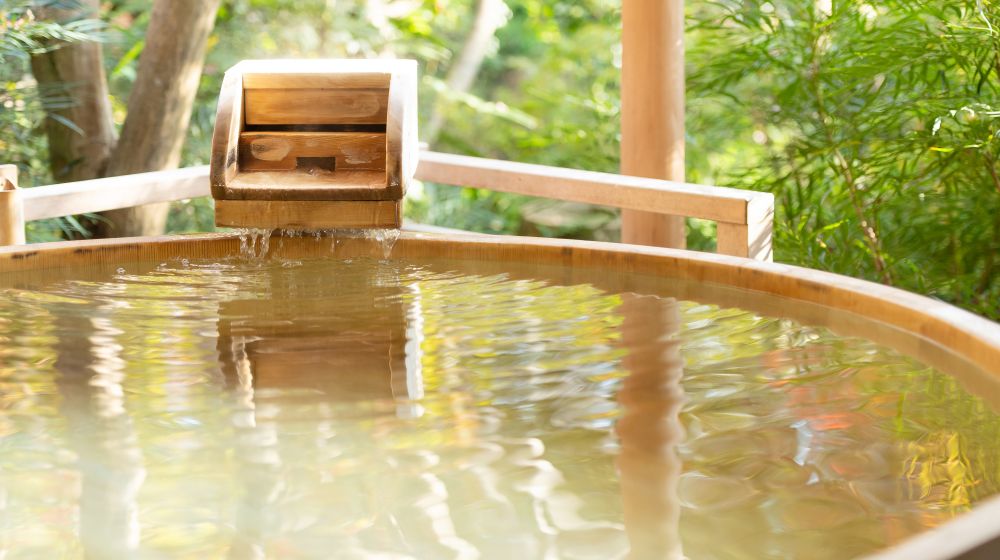
Hyogo Prefecture has an onsen resort with a long history of being used as an onsen resort since ancient times.
Kinosaki Onsen has been open for more than 1300 years, and Yumura Onsen has been open for more than 1200 years. Yumura Onsen is said to have been opened in 848, but it is believed that it existed in the Nara period (710~794) from the description on the excavated wooden tablets. It is said that the source of Arima Onsen was discovered about 3,000 years ago in the mythological period of Japan. Arima Onsen is a famous onsen with a history that is counted as one of the "Three Ancient Springs of Japan".
There is a theory about "Three Ancient Springs of Japan", but in general, they are Dogo Onsen in Ehime Prefecture, Arima Onsen in Hyogo Prefecture, and Shirahama Onsen in Wakayama Prefecture. This is derived from the fact that there is a description in the "Japan Shoki" and "Fudoki" compiled in the Nara period (710~794). "Japan Shoki" is the oldest official history of Japan, and "Fudoki" is a topographical record that summarizes the products, topography, and ancient legends of various countries.
Arima Onsen first appears in Japan literature in the "Japan Shoki", which describes Emperor Shumei's visit to Arima Onsen for 86 days in 631 during the Asuka period (592~710). The trip to the onsen resort was different from the general trip, and it was a long time, so it is said that the purpose was to cure the onsen. This is the first record in Japan where the Emperor performed an onsen cure. While the capital was located in Kyoto, Arima Onsen was easily accessible from the capital. For this reason, many powerful people and great people, such as emperors and generals who have left their names in history, visited Arima Onsen. The Arima Highway is a highway that emperors and aristocrats have traveled to and from Arima Onsen since ancient times. Many people went through this road to Arima Onsen.
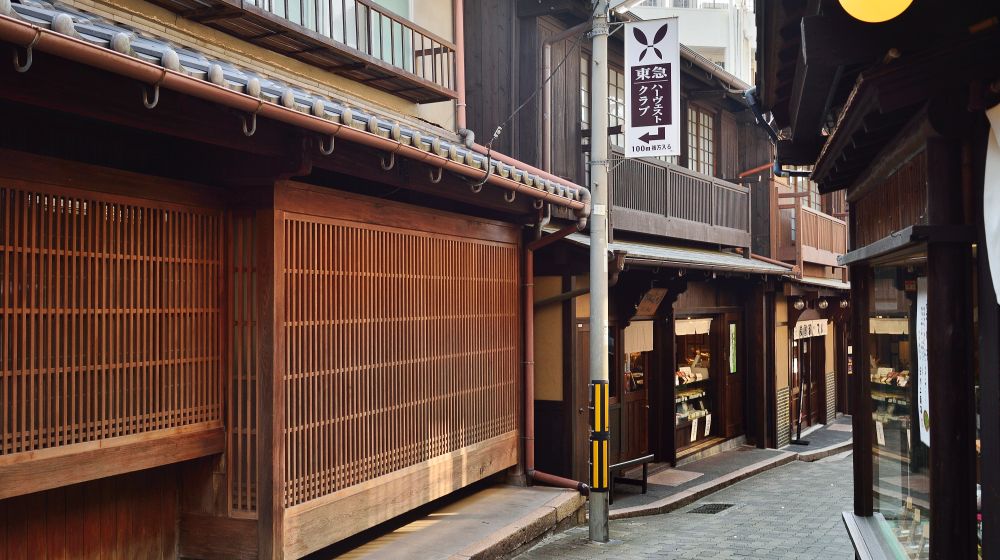
In the Edo period (1603~1868), when onsen spread to the common people, various onsen banzuke were created in Japan. The onsen banzuke is a ranking of onsens based on the sumo wrestling numbering table. In the 1851 West Japan Onsen Banzuke, Arima Onsen ranked first and Kinosaki Onsen ranked second. In the Edo period (1603~1868), Arima Onsen was one of the most famous onsens in Japan, and it was crowded with onsen bathers from all over the country via the Arima Kaido.
Arima Onsen is an onsen with a well-known and historical history in Japan, which is counted as one of the three ancient springs in Japan. Throughout Japan's long history, it has been loved by many people, from the emperor to the common people. One of the attractions is that it is easily accessible from the surrounding major cities.
Arima Onsen is one of the few onsens in the world that contains 7 of the 9 main components designated by the Ministry of the Environment as a therapeutic spring.
At Arima Onsen, you can enjoy two different types of springs, called "Kinsen" and "Ginsen". "Kinsen" is a brown hot water that contains iron and salt. "Ginsen" is a colorless and transparent hot water that contains carbonic acid and radon springs. "Kinsen" and "Ginsen" can be used for day trips in the public communal baths.
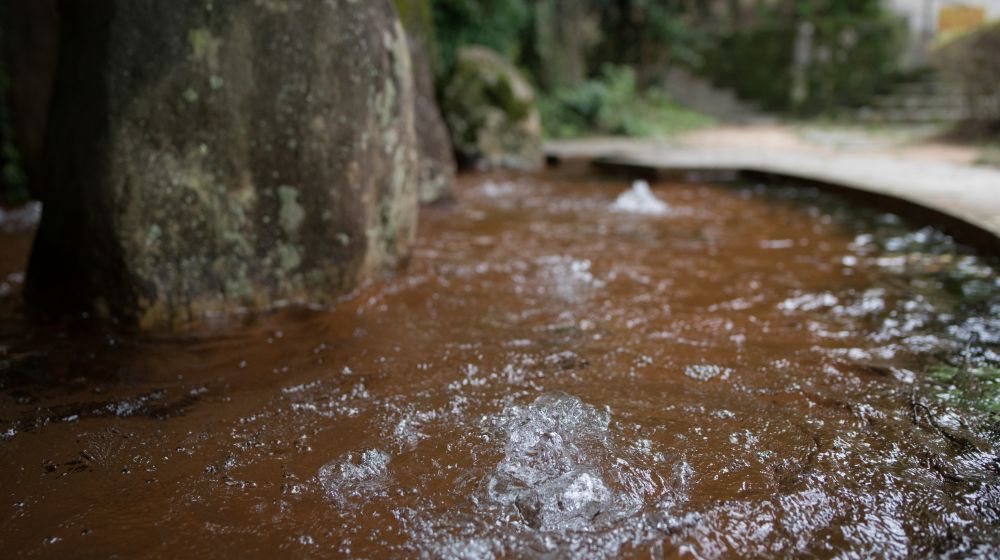
In Kobe, where Arima Onsen is located, you can not only enjoy the traditional culture of the Japan, but also enjoy the port city of Kobe.
Kobe Harborland is home to Kobe's famous landmark, Kobe Port Tower, and many cruise ships depart from Kobe Port. Kitano Ijinkan Street is an area where foreigners have set up residences since the opening of the port of Kobe in 1868, and there are many Western-style buildings.

Kobe Nunobiki Herb Garden is one of the largest herb gardens in Japan, with about 200 kinds of flowers and herbs in bloom. Kobe Animal Garden is a symbiosis park where flowers, animals, and people can interact with each other. Both are popular spots in Kobe where you can feel close to flora and fauna.
Kinosaki Onsen is one of Kansai's leading onsen towns with a history of more than 1,300 years.
At Kinosaki Onsen, you can enjoy 7 outdoor onsens. "Gaiyu" refers to the communal bath outside as opposed to the "inner bath" inside the inn.
Kinosaki Onsen is adjacent to Kinosaki Onsen and has seven communal baths with different tastes and characteristics. There are many onsen resorts in Japan, but Kinosaki Onsen is one of the few onsen resorts with different communal baths in adjacent areas.
One of the highlights of Kinosaki Onsen is the cityscape full of atmosphere. The stone drum bridge over the Ōtai River and the rows of willow trees along the river are typical of Kinosaki Onsen. At Kinosaki Onsen, you can feel the cherry blossoms in spring and the snowy scenery in winter, and the different atmospheres of the four seasons. Kinosaki Onsen Town is a town where it is common to walk around the town in a yukata. If you change into a yukata and geta and go on a "tour of the outdoor baths" of the seven communal baths, you can have the best onsen experience.
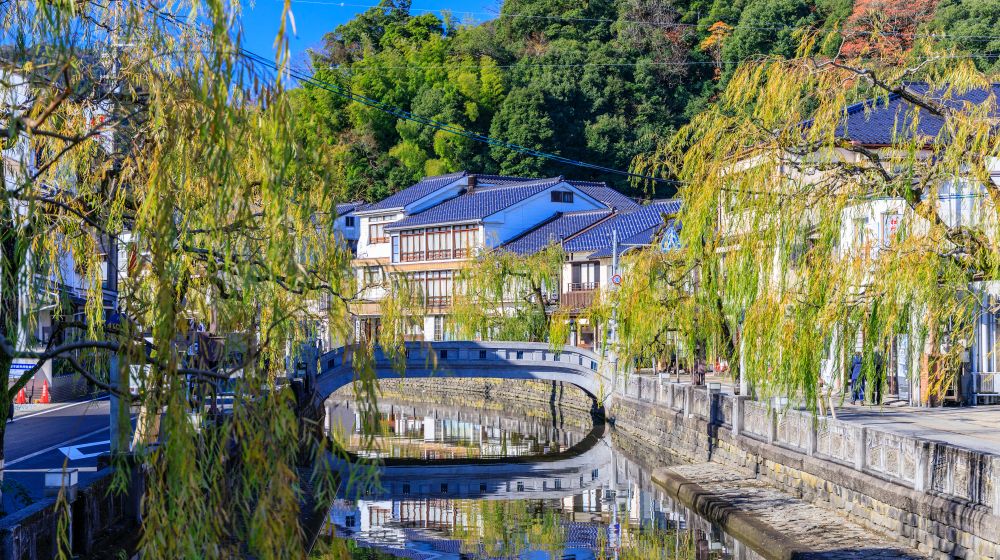
Communal baths are used on a daily basis not only by tourists but also by locals. Here, you can interact with the locals and soak in the bathtub of the local onsen. Kinosaki is rich in fresh seafood due to its proximity to the Sea of Japan. You can also enjoy local gourmet foods such as crabs and Tajima beef.
Yumura Onsen is a famous onsen in the Tajima area, along with Kinosaki Onsen, which has a history of more than 1,200 years.
It is a weak alkaline spring that is gentle on the skin, and after bathing, it will be smooth from the core of the body forever.
Yumura Onsen is one of the hottest onsens in Japan. The source bath is called "Arayu", and hot water with a high temperature of 98 degrees Celsius gushes out 470 liters per minute. The abundant high-heat hot water is distributed not only to inns but also to households and used for foot baths. Locally, there is a "yugaki culture" in which eggs and vegetables are boiled in a hot water pot.
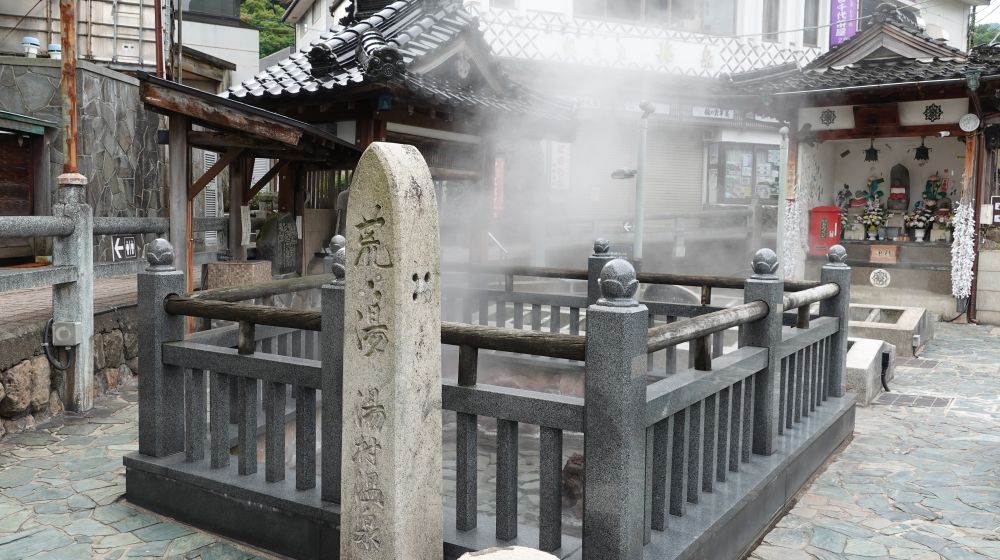
At Yumura Onsen, you can enjoy not only the onsens but also the local onsen culture. "Arayu" is open to anyone 24 hours a day, 365 days a year. Eggs and vegetables are sold at shops in the vicinity, so even tourists can easily experience the yugaki culture. If you are tired of strolling around the onsen town, you can relax in the foot bath while looking at the scenery of the Haruki River.
In the vicinity of Yumura Onsen, there are the ruins of Takeda Castle, which is called the "castle in the sky". The ruins of Takeda Castle are one of the 100 famous castles in Japan. In the early morning when the morning fog occurs, the top of the mountain where the castle ruins are located is surrounded by a sea of clouds, and you can see the beautiful castle ruins floating in the sky. Tajima Ranch Park, located about 6.5 km from Yumura Onsen, is a ski resort where you can enjoy skiing in winter.
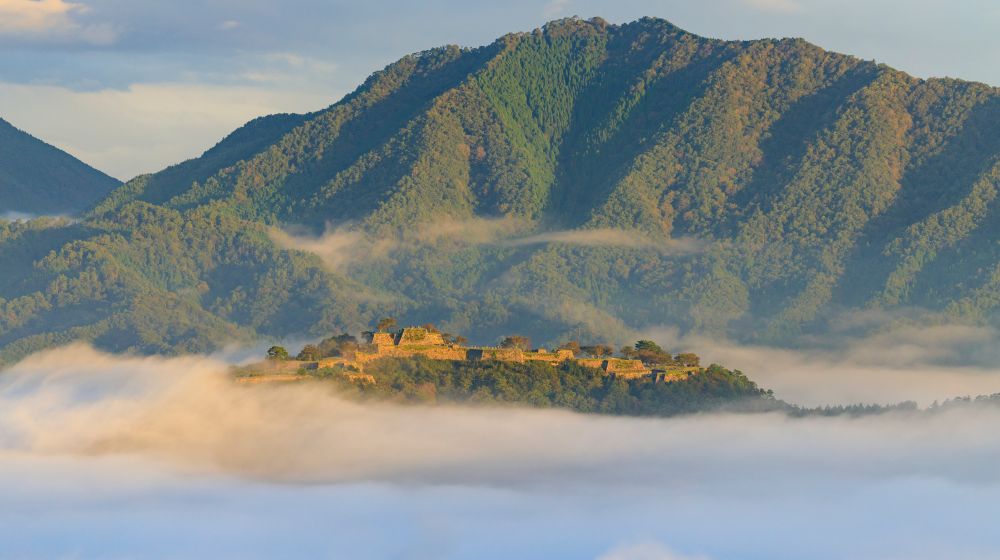
Located in downtown Sumoto, which flourished as a castle town of Sumoto Castle, it is the largest onsen resort on Awaji Island.
The water contains colorless and transparent radon, which makes the skin moist and smooth, and it is difficult to cool down.
The onsen town is lined with quaint inns such as long-established luxury inns and open-air baths overlooking the sea along the coastline.
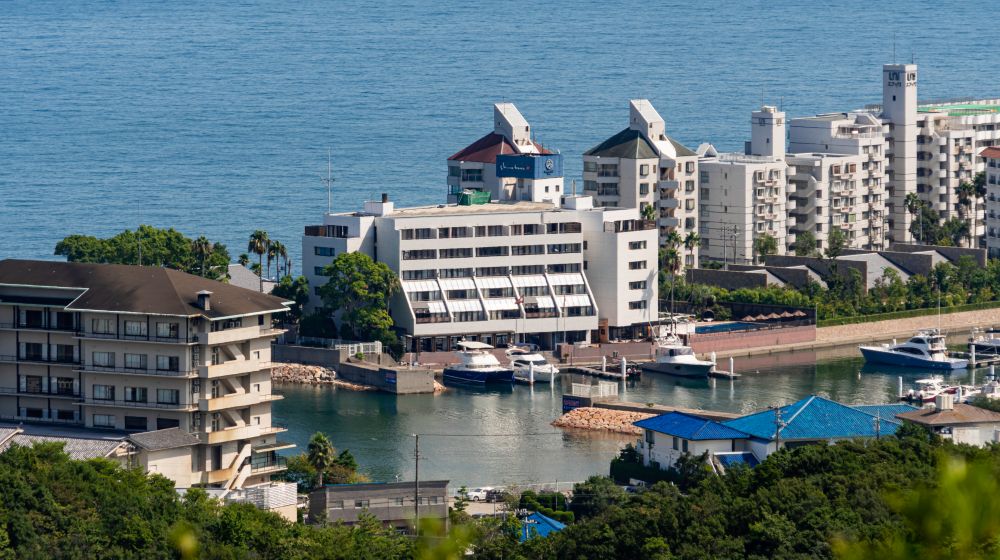
Since ancient times, Awaji Island has delivered a large number of foodstuffs, mainly seafood, to the imperial court of Japan. Here, you can enjoy the gourmet food of Awaji Island, which has been endorsed by the imperial court of Japan.
In Sumoto Onsen Town, there is Ohama Beach. Certified by the Ministry of the Environment as one of the "100 Best Bathing Places in Japan", it is a shallow beach with beautiful water. The beach is covered with black pines called Senbonmatsu, and it is recommended to take a walk in the park outside of season.

Kinosaki Onsen
Hyogo
Nationally Registered Tangible Cultural Property

Arima Onsen
Hyogo
A hotel of two onsen and ten baths - the gold spring and the silver spring.
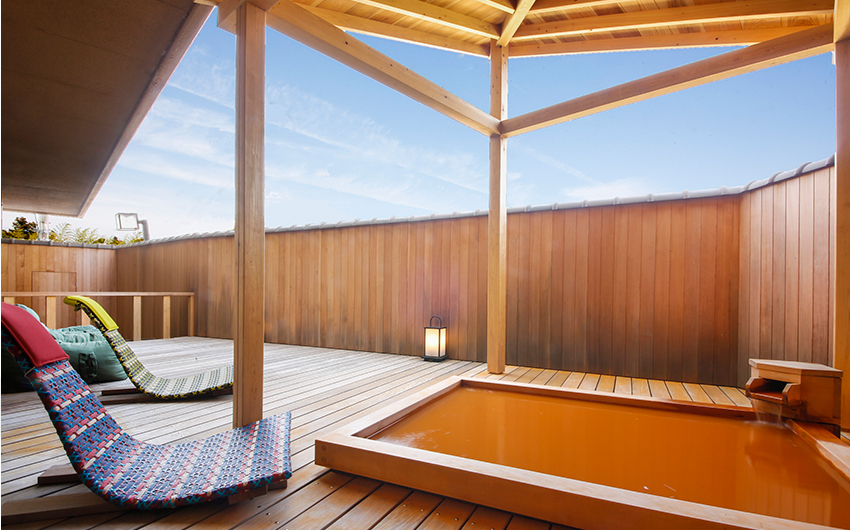
Arima Onsen
Hyogo
Crafting the Essence of Japan and the Present: A Japanese Modern Inn